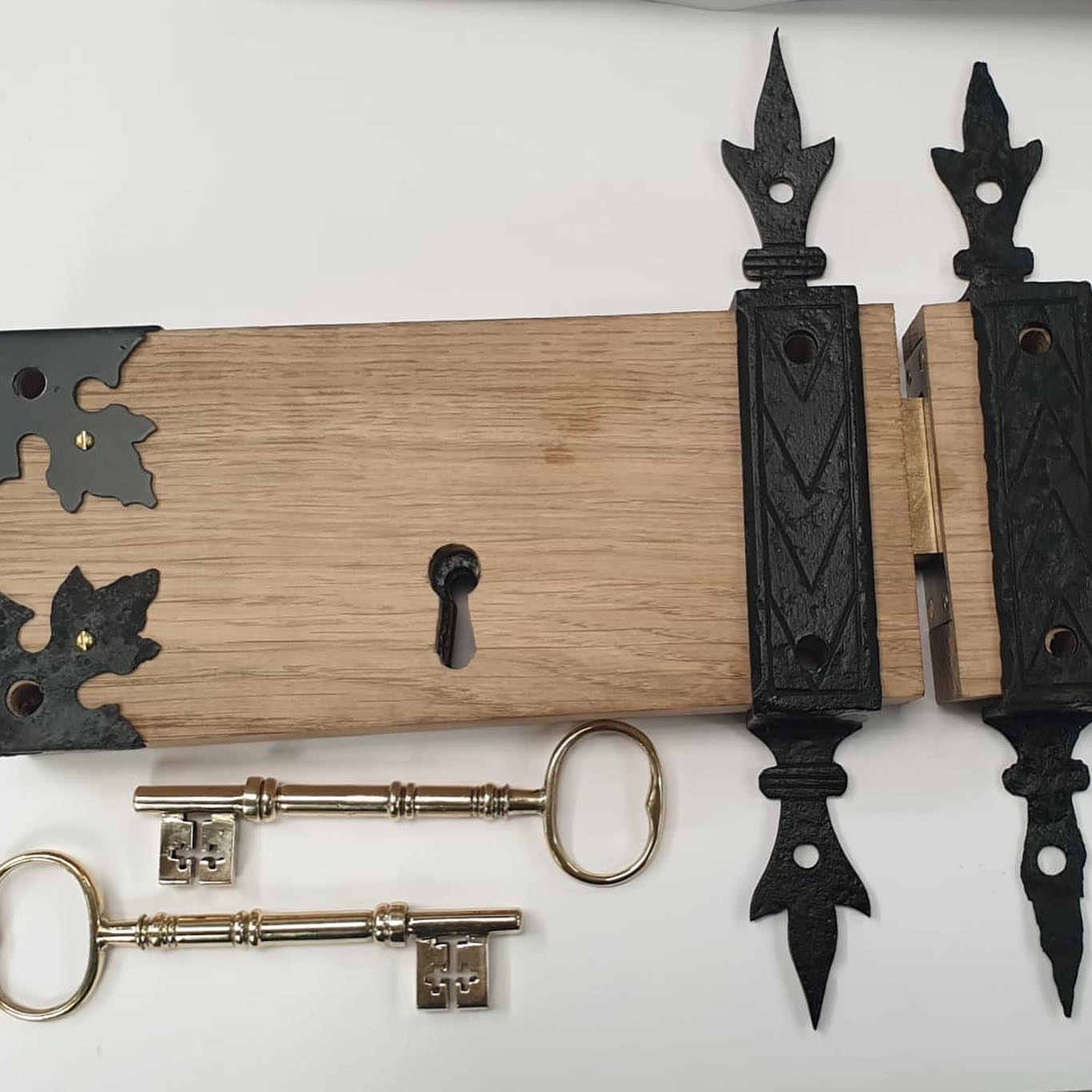Victorian Locks
Jessica Burr
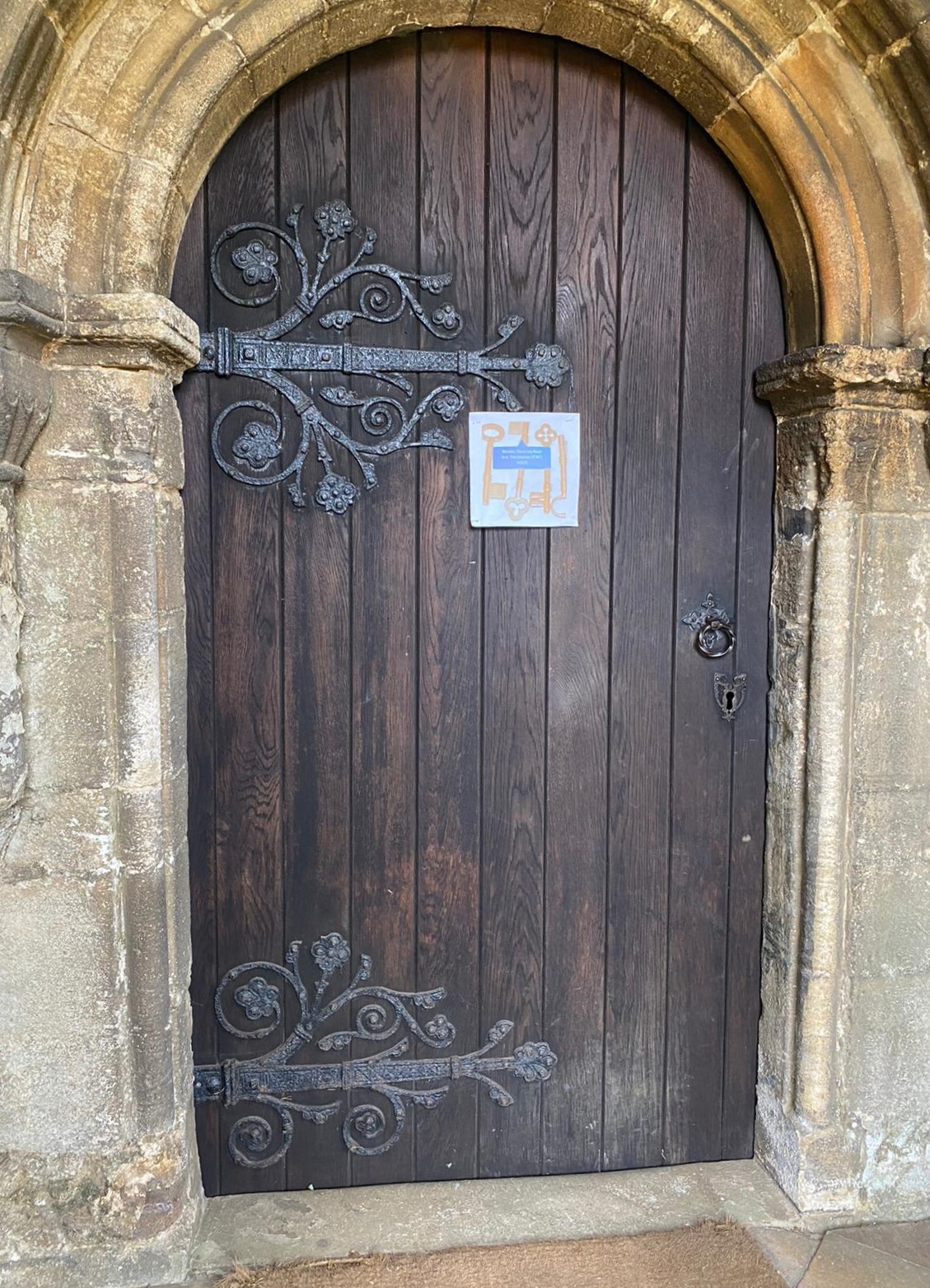 |
|
| A Victorian church door at St Mary’s, Everton with a wood-encased deadlock (top right) and ornate metalwork |
Security is one of the everchanging responsibilities we face when looking after a church.
With technology advancing all the time, keeping security sympathetic yet up to date can be tricky, especially on the doors of listed buildings.
On the exterior doors of a church, whether they are single or double doors, you would typically expect to find a large, surface-mounted rim lock with a timber casing on the inner face, together with a ring pull or latch, bolts, and large stone-mounted strap hinges.
This form of rim lock is among the oldest, with a deadbolt fixed to the inner face of the door and covered by the timber casing (a deadbolt or deadlock is one that can only be operated by a key – there is no handle on the inside.)
In most cases the lock’s security relies on a specially shaped obstruction or ‘ward’ that allows only a key of the correct shape to rotate and connect with the bolt itself, pushing it into its new position.
There may also be a plate called a lever that prevents the bolt from sliding. This is raised by the key as it turns, allowing the bolt to be moved.
The bolt would lock into either a mortised hole in the stonework or an iron staple mounted on the surface of the wall.
Alternately, if the door has a timber frame an iron keep might replace the staple. In the Victorian era many older doors were refurbished to look ‘gothic’, and the old lock would be replaced. The new lock would usually have a varnished oak casing embellished with hand forged detailing, the degree of embellishment varying according to the status and age of the church.
At the same time simple strap hinges were often replaced with large ornate cast hinges that spread across the front of the door, and ring pull handles or gothic style Suffolk latches were introduced along with door studs and sometimes even knockers.
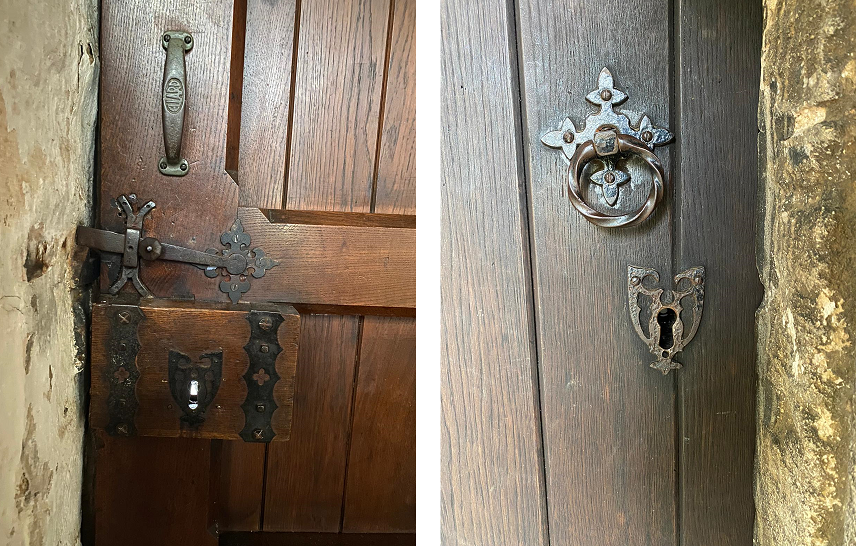
Left: a wood-encased deadlock and right: ornate metalwork at St Mary's, Everton
The locks would have been entirely handmade from a variety of materials, including wrought iron, blacksmith’s steel and brass, all with a single lever inside. The keys too were handmade, with various cuts on the key blanks to pass the individual wardings found inside the lock.
While the door furniture and fittings are clearly extremely important to the security of the building, it is important not to overlook the importance of the keys themselves. Among the many problems faced by churchwardens are loss of keys, issuing keys and getting new keys cut.
Due to the nature of the rim lock, church keys are large, heavy and often ornate, and off-the-shelf replacements are not readily available.
One of the problems we see regularly at Mid Beds Locksmiths (MBL) is damage caused by poor replacement keys. This may be because they were cut to match a worn key, or because they were made with modern steel blanks which don’t quite match the originals in either gauge or size.
Over time these keys actually wear down the internal mechanism of the lock, causing it to fail. This can happen suddenly, and whether the door is in the locked position or open, the implications can be disastrous.
Without exception, it is always better to have a new key cut to fit the lock rather than copy an old key. A sure sign of a looming problem is a key which has a lot of movement. If it moves up and down and side to side when it is in the keyhole, then it is either worn or not the correct size.
Along with the rim lock and hand-forged latches you may also find large cast-iron surface mounted shoot bolts which are fitted either top and bottom of the inactive leaf on double door sets or horizontally top and bottom on single door sets. On old church doors these can either be ornate or incredibly simple, but both give a good amount of security if in working condition.
Maintenance
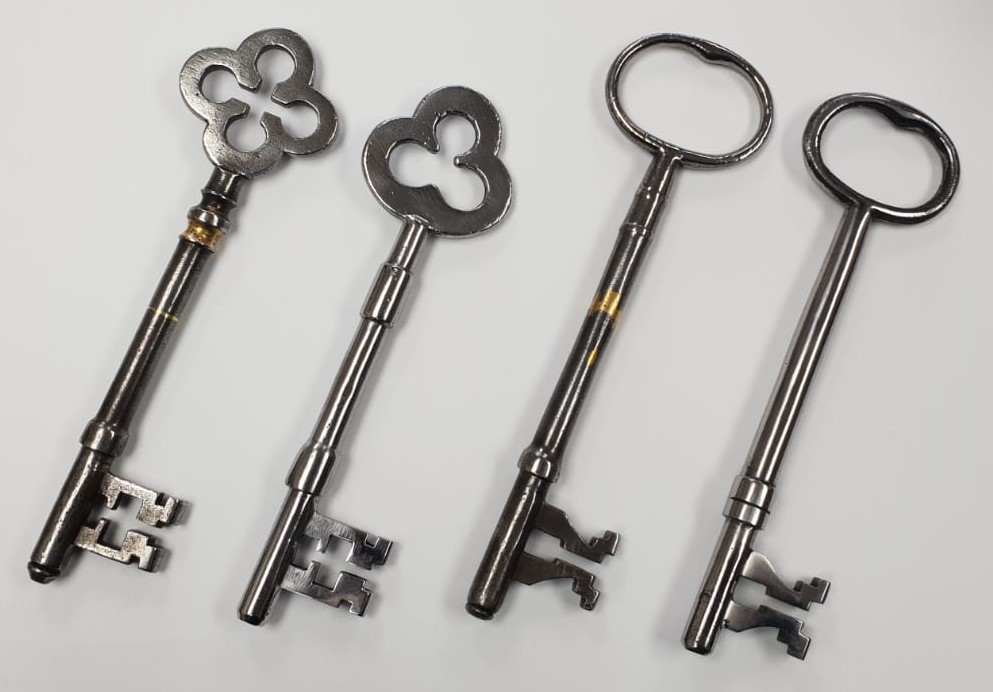
Replacement keys: from the left, keys one and three are the originals and have been repaired with brass where
they had broken; keys two and four are new ones made by MBL using stronger blanks.
Unfortunately, the conservation, care and maintenance of door furniture are often the last things on anyone’s priority list, mainly due to the fact little is known of their history, development abrasive paste under the moving parts. Locks may also be damaged as the door drops.
This occurs gradually as the repeated rotation of the heavy strap hinges on their iron pins wears away the metal until the door no longer aligns correctly. As well as wearing out the hinges, the drop can cause permanent damage to the floor as the door grinds dirt across it, and any misalignment can put pressure on both the lock and the bolts, making them stiff to lock and unlock.
Repairing the hinges can be as simple as introducing a suitable bespoke washer between the pin and the hinge to lift the door up, but it may be necessary to make new parts if they are severely worn. The type of repair will also depend on the material of the hinges. For example, new sections may be welded onto wrought iron or steel hinges, but cast iron is far more difficult to repair.
Security Improvements
If security is an issue and a secondary lock is required, then care and a sympathetic vision is necessary. If the church is listed, permission (or a faculty) may be granted for installing a discreet secondary lock if the original can remain on the door and in use, and provided any alteration of the door and its surrounding doorway can be justified.
The new lock could be a modern insurance-rated mortise lock or even an electronic lock, but it must be finished sympathetically, and any alterations to historic fabric required should be kept to the minimum. If the external door opens out rather than into the room then hinge bolts may be a good option to improve security, especially if the existing hinge knuckles can be seen from the outside.
Where a door is of particular significance due to its age or the integrity of its original design, any alteration may be difficult to justify, and the introduction of a secondary lock may not be possible. One alternative might be the installation of a safe inside, perhaps alongside other improvements to the security of an inside room or cupboard.
The Brookwood Cemetery Lock
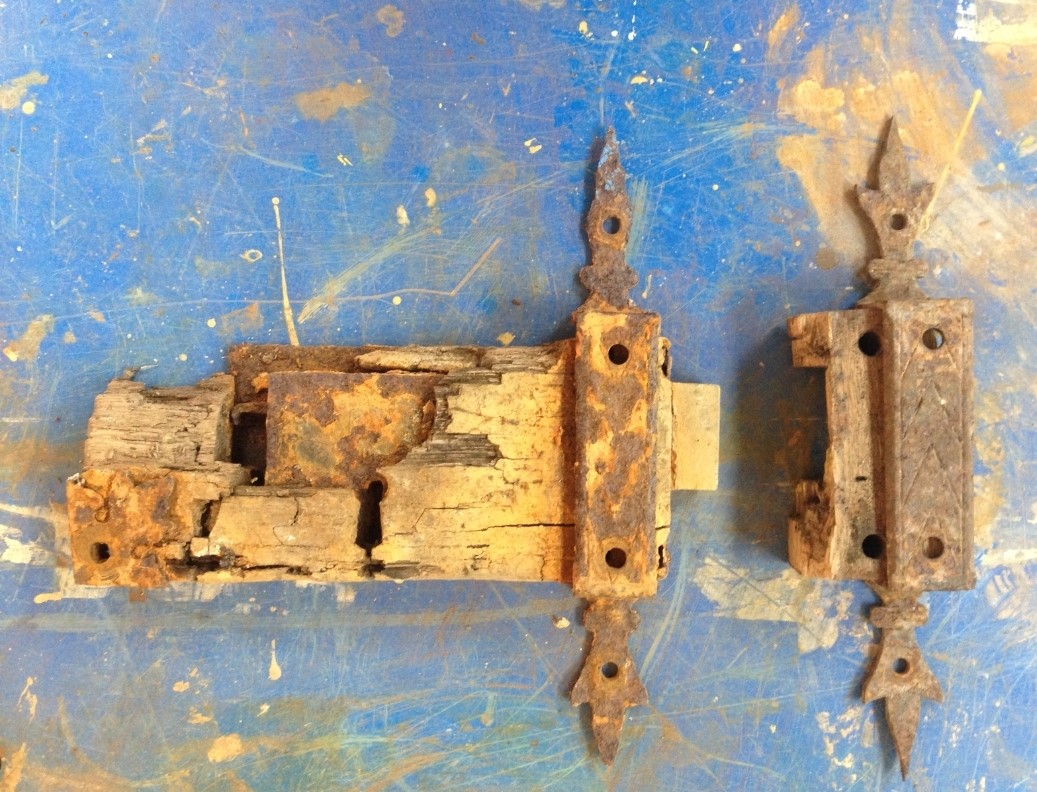
Above: The original lock salvaged from Brookwood Cemetery Below: The restored lock with a new timber block and a new ornate corner plate, closely matching the original designs, and two new keys.
Most conservation work involves simple regular maintenance and occasional repairs, but occasionally a much greater degree of intervention is required. In this example from Brookwood Cemetery in Surrey, the remains of an original lock were discovered in the undergrowth.
It belonged to a Grade I listed Victorian gothic chapel dating from 1851 which was then being repaired, and MBL was asked to see if the lock could also be restored. As the illustration above shows, the original timber couldn’t be salvaged, but the original gothic straps and one corner plate had survived, together with the internal metalwork which was severely rusty and damaged.
Sufficient fabric had survived for us to establish the original form of the lock exactly, enabling it to be fully repaired and accurately restored. The work included making an entirely new wooden block and metal corner backet using materials to match the originals.
The original metal components were carefully cleaned to remove the rust and then painted with a modern paint system to protect them from further corrosion. The only item that was missing was the key, which had to be made based on the available information.
While the form of the bit and gauge was dictated by the warding of the lock itself, the form of the bow and shaft was more speculative. The case illustrates what can be achieved by specialist locksmiths when necessary, but thankfully most historic locks we see at MBL are in far better shape than this.



